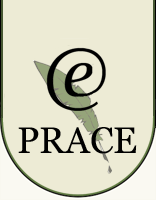
System of formal education
The schooling system in Ghana has grown considerably since the time of independence in 1957 when there was only one university in the country and a handful of primary and secondary schools (Salm 2002:9).
Today in Ghana there are 12,130 primary schools, 5,450 junior secondary schools, 503 senior secondary schools, 21 training colleges, 18 technical institutions, two diploma-awarding institutions and five universities serving a population of 17 million. Such a number of educational institutions provides the majority of Ghanaians with relatively easy access to good education. However, since the system is based on the British model it had to be adjusted, in recent years, to improve the process of education and make it more accessible (Gocking 2005:260).
Before the mid-1980s, it took a single student six years of primary school, four years of middle school and seven years of secondary education to get to university level which discouraged many young people from continuing their education. In consequence, the majority of students finished their education in the middle school; only around 10 percent decided to advance to secondary or vocational schools (Salm 2002:9).
Nowadays basic education, that is primary-and-middle-school education, is free and compulsory since a sufficient number of teachers and facilities are available. Pupils enter primary school at the age of six and after six years they pass into a new junior secondary school system for 3 years of academic training including vocational and technical training (ibid 2002:10-11).
After completing the basic school, students may go to a senior secondary school for a course lasting three years. The aim of this course is to prepare them for university education. At this level students study a combination of three so-called ‘elective’ subjects and a number of ‘core’ subjects that are mandatory and studied by all students. The ‘core’ subjects are as follows: Mathematics, English and Science.
To be able to enter a university a student is expected to pass West African Senior Secondary Certificate Examinations (WASSCE) verifying the level of knowledge and abilities he obtained during the senior secondary education period.
School enrolment amounts to almost 2 million: 1,3 million primary; 107,600 secondary; 489,000 middle; 21,280 technical; 11,300 teacher training, and 5,500 university (Boahen 2000:10).
komentarze
Copyright © 2008-2010 EPrace oraz autorzy prac.